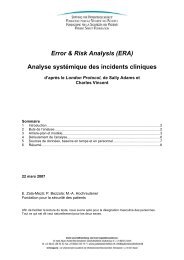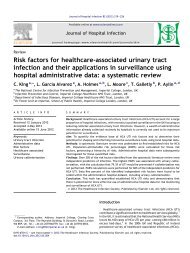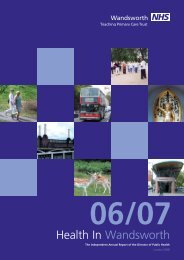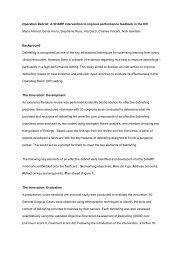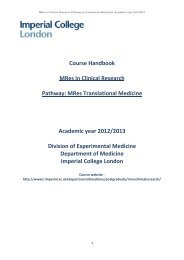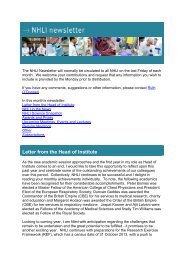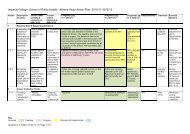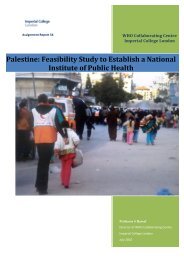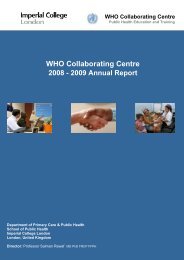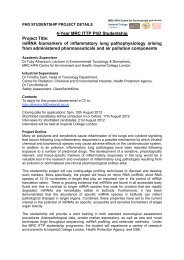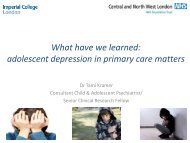An Introduction to qRT-PCR Assays Using Sybr Green (Using SDS ...
An Introduction to qRT-PCR Assays Using Sybr Green (Using SDS ...
An Introduction to qRT-PCR Assays Using Sybr Green (Using SDS ...
Create successful ePaper yourself
Turn your PDF publications into a flip-book with our unique Google optimized e-Paper software.
and can be fitted in when the machine is not in use. This charge is <strong>to</strong> cover thecost of the annual service contract for the machine.1. Plan ExperimentsBefore conducting the assay decide on the form of the experiment and howdata is <strong>to</strong> be analysed. This is an important aspect of the procedure, as it willaffect the conclusions that it is possible <strong>to</strong> draw from the results of the assay.The main considerations are:• Will expression be presented as relative expression or copies?• How many and which internal controls will be used?• Are quality controls necessary?a) Relative Expression vs Copy NumbersIn most cases biological experiments include a set of control samples, andthese may be used as a reference point for relative quantification. This ismost reliable when the comparison is being made of equivalent samples. Thatis, similar tissue/cell type with a relatively discrete biological stimulus.If the data is <strong>to</strong> be presented as a change relative <strong>to</strong> a control (eg:untreated or wildtype sample), then relative expression is an ideal approach.Setting up an assay for relative quantification is simplified as the assay revertsbe essentially being a normal <strong>PCR</strong> (albeit on a larger scale). The whole assayconsists of measuring target gene and internal control gene expression in bothcontrol and experimental samples, and the only additional samples requiredare no template controls (NTCs) <strong>to</strong> ensure that no contamination is present.Much of the early literature on <strong>qRT</strong>-<strong>PCR</strong> revolves arounddetermination of copy numbers of a transcript, also termed absolutequantification. However, an increasing number of studies have started <strong>to</strong>consider the relevance of copy numbers <strong>to</strong> biological questions. Approaches<strong>to</strong> this problem range from the simple assumption that product will doubleevery cycle, <strong>to</strong> the use of plasmid or cDNA standard curves <strong>to</strong> deriveefficiency, or more complicated calculations of efficiency from amplificationkinetics (see ‘Data <strong>An</strong>alysis’ below).One of the main problems with copy numbers is that the preparationand maintenance of exact concentrations of nucleic acids is technicallychallenging. Despite its widespread use spectropho<strong>to</strong>metry is not an exactmethod for quantification, and furthermore, long-term s<strong>to</strong>rage of nucleicacids at low concentrations without any degradation is not as straightforwardas it may initially seem. Additionally, due <strong>to</strong> the exponential nature ofamplification that occurs in <strong>PCR</strong>, slight differences in amplification rates can



